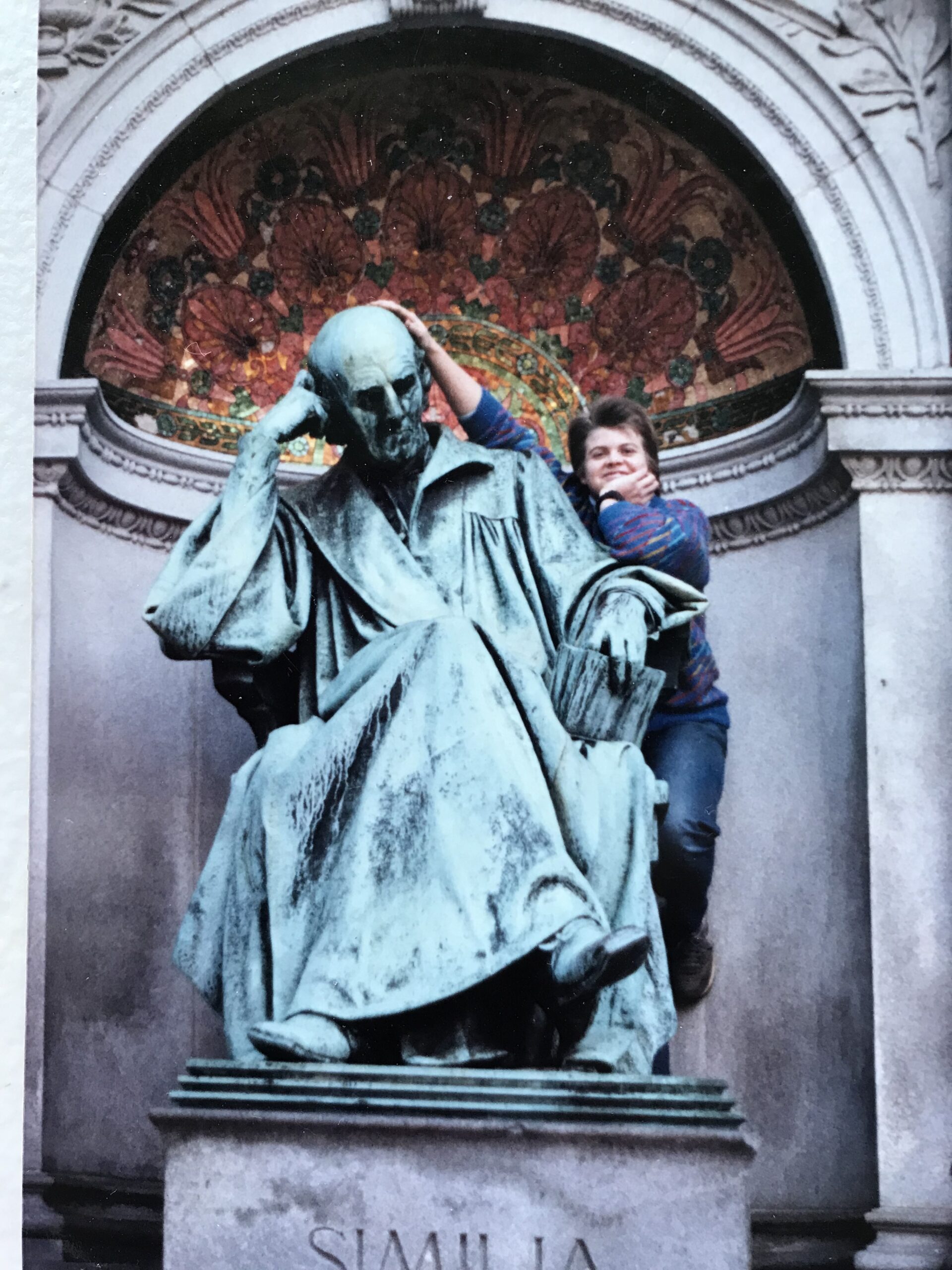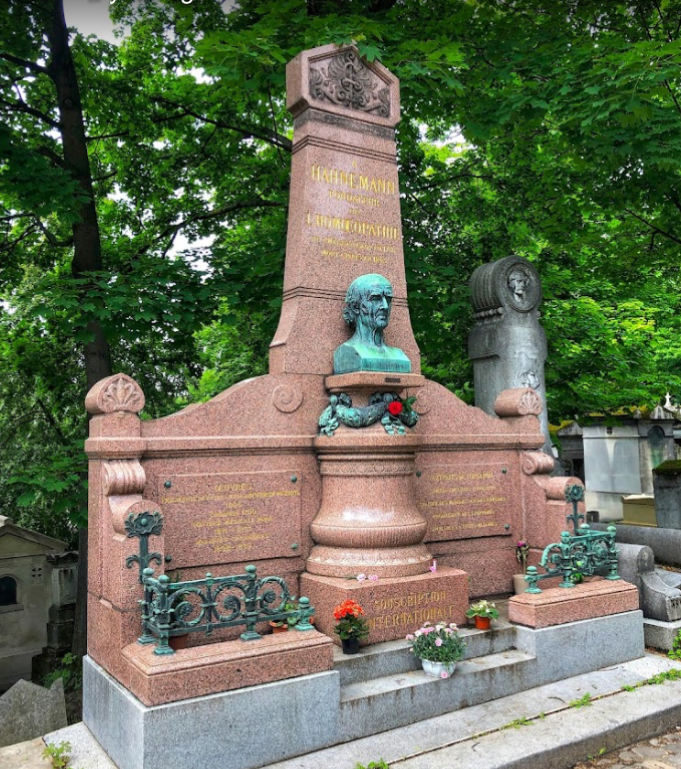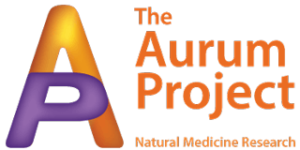This blog has been generously shared by Susanna Shelton, Director of College of Natural Health & Homeopathy. Giving her experience of her personal pilgrimages.
Washington DC Monument USA
I encountered homeopathic medicine while living in the UK in the early 1980s. Then in 1985, on one of my visits to the USA to visit family and friends I made a ‘pilgrimage’ to Washington, DC as I had been told there was a rather impressive monument of Dr Samuel Hahnemann, the founder of homeopathy.
 A friend took this photo of me during that visit. I’d rather cheekily climbed up alongside the massive statue, placing my hand on his head, hoping for continued good luck with my study and practice of the art and science of homeopathy…and perhaps hoping that I might channel some of his shining brilliance and compassion.
A friend took this photo of me during that visit. I’d rather cheekily climbed up alongside the massive statue, placing my hand on his head, hoping for continued good luck with my study and practice of the art and science of homeopathy…and perhaps hoping that I might channel some of his shining brilliance and compassion.
Ironically, my family had lived in the Washington DC area in the 1970s and we had driven past this monument many times. I’d never taken much notice of it, except to see that the wide and welcoming benches that flank the main statue were often used by homeless folks in the nation’s capital.
In 2000, I traveled from NZ to attend a re-dedication of the monument for its 100th birthday. The event was part of the American Institute of Homeopathy Conference. Also attending from New Zealand was Gwyneth Evans (then, Principal of Wellington College of Homeopathy) and her husband Julian Winston (a renowned American homeopathic historian and author of Faces of Homeopathy, who had migrated to Wellington in 1994).
I remember Julian explaining that the mosaic behind Hahnemann’s head depicts the Cinchona (Quinine) plant– the substance which Hahnemann digested in the first proving and led him to conclude that “like cures likes”. The Latin inscription of “Similia Similibus Curentur” on the plinth which elevates the statue honours this founding principle of homeopathy.
From 2000-2010 a campaign by the American Institute of Homeopathy and the National Centre for Homeopathy USA raised funds to clean and restore the monument and the last time I drove by– in 2019, it looked positively glowing.
Wikipedia has some great photos of the monument and lists some fascinating details about its design, construction and current protection. Some of my favourite details are:
Also, on either side of this central statue feature are two Latin phrases cherished by Hahnemann: firstly, “Aude Sapere!” which translates, “Dare to Try It” or “Dare to be Bold/ Audacious!” and secondly: “Non inutilis vixi” which translates: “I have not lived in vain.” and this is also inscribed on his tomb in Paris France.
I noticed in some of the recent pictures that pilgrims seem to be leaving wee stones as a sign of reverence. Perhaps I’ll leave a wee chunk of Sulphur from New Zealand/Aotearoa when I next visit. (Hahnemann’s clinical case books show that he was a frequent prescriber of Sulphur…and several historians have speculated that it would have been a good remedy for the man himself.)
Paris Monument, France
If you are planning a trip to Paris anytime in the future, you can visit another significant Hahnemann monument. You need to make your way to the famous Cimeterie du Pere- Lachaise on the Boulevard de Menilmontant in the 20th Arrondissement to pay respects at the final resting place of Samuel Hahnemann. History tells us that Hahnemann died in 1843 and his body was originally interred in the Paris suburb of Montmartre. The family plot where Hahnemann was buried belonged to his second wife Marie Melanie d’Hervilly’s family. When Melanie died 35 years later, in 1878 she was interred along with Samuel. Annual fees were required to allow the deceased remains to reside in the family plot. The payment for these fell into arrears and threatened the disinterment and disposal of the couple’s remains. This came to the attention of homeopaths and admirers of the Hahnemanns, which led to a fund raising campaign for the preservation of the graves. In the 1890s enough money was raised by the worldwide Homeopathic community to pay for a significant monument to be built in recognition of Hahnemann’s contributions and with a plan to shift the remains to the most prominent cemetery in Paris— Pere Lachaise. 
As a result, in 1898, his and Melanie’s remains were exhumed in Montmarte and re-interred in Pere Lachaise. In 2011, I was fortunate enough to make a pilgrimage to the impressive Hahnemann Tomb Monument. It stands out prominently with its distinctive red granite composition and a bronze bust of Hahnemann. The size and quality of the monument and bust are a testimony to the reverence of the Founder of Homeopathy amongst the next generation of practitioners who commissioned the monument. Today, three generations on, there are always flowers left in tribute. The day we visited I noticed not only flowers left behind but once again, small stones left by admiring pilgrims.
Finding the tomb was not overly difficult, I had to purchase a map of famous people buried in the cemetery and found Hahnemann listed and followed the coordinates to the monument. Make sure you allocate plenty of time as the cemetery covers 44 hectares (110 acres) of land and is the home of over one million interments as well as being an inner city repository of plant & fauna biodiversity as a result of the prohibition of pesticide use in the cemetery and feral cat population controls via a sterilise and release programme were instigated!
Pere Lachaise is the most visited cemetery in the world, so expect company as others visit the resting place of many French cultural and political elite as well as moving monuments to people lost in World Wars I and II and in the Holocaust. Most of the graves date from the 19th Century but some notables interred in the 20th Century include: Oscar Wilde, Edith Piaf, Gertrude Stein, and Jim Morrison.
The pilgrimage is worth it and I experienced it as a solemn yet inspiring spot. It felt good also to pay respects to Melanie Hahnemann whose remains rest with those of Samuel. As she was the first female homeopath, I felt I was acknowledging another key ‘ancestor’ in homeopathy.
Happy Homeopathic Pilgrimaging! Aude Sapere!
 Susanna Shelton BA, MDiv, ADH, RCHom (Life member) AHA (General), Aurum Project Member
Susanna Shelton BA, MDiv, ADH, RCHom (Life member) AHA (General), Aurum Project Member
Susanna is American by birth and undergrad education. Her post grad degree and homeopathic training were completed in the 1980s in the UK. From 1991 she has been practising and teaching homeopathy and she is the Director of the College of Natural Health & Homeopathy, (Australia, NZ and Worldwide online). Susanna was a founding editor and frequent contributor to Homeopathy NewZ, a monthly publication. Since 2015, she’s been a Life Member of the New Zealand Council of Homeopaths and since 2020, happily resident in the Southern Highlands of NSW, Australia.
